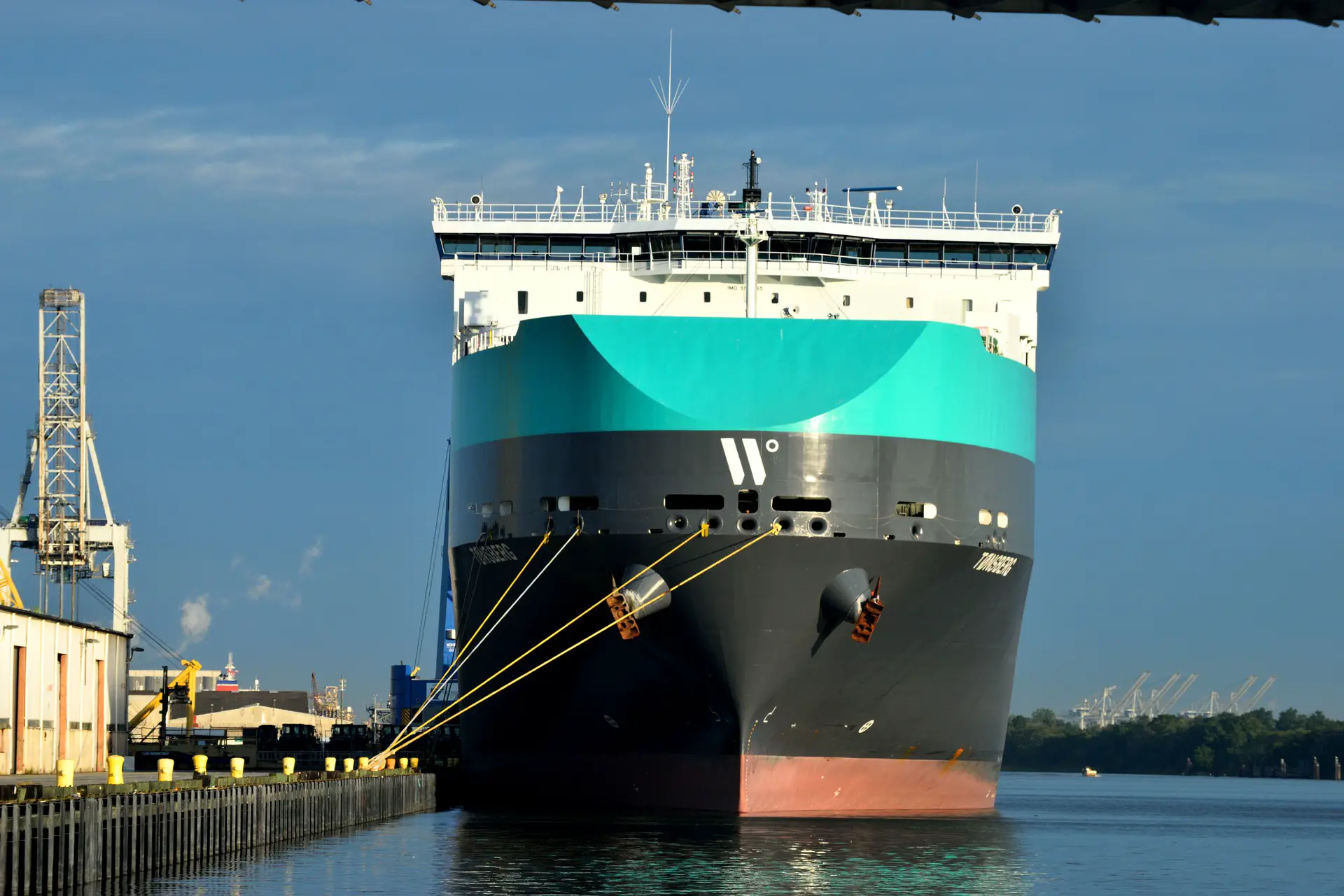Georgia, South Carolina, and North Carolina ports are congested with heavy shipping traffic heading inbound from the Atlantic Ocean and outbound to the Atlantic. Ships deliver products, vehicles, and more from countries across the world. Cargo ships cause congestion in narrow waterways due to their immense size. It is amazing to consider how do cargo ships float. Boaters must heed caution when operating in the vicinity of massive vessels. Here is what to know about boating safely near cargo ships.
What Are The Busiest Ports In Georgia, South Carolina, And North Carolina
When it comes to busy shipping ports on the east coast of the United States, here are the most active in North Carolina, South Carolina, and Georgia.
Georgia
In downtown Savannah, Georgia lies the Port Of Savannah. The port measures 47 feet deep and passes by the banks of the cobblestone-lined street.
South Carolina
The Port of Charleston is the busiest in the state of South Carolina. Once the channel dredge is complete, the port will feature 52-foot water depths.
North Carolina
In North Carolina, the biggest shipping port is the Port Of Wilmington, featuring a 42-foot deep channel and over 6,000 feet of wharf space.
How Close Can You Get To A Cargo Ship
Per United States Coast Guard laws, recreational vessels must not come closer than 100 yards to commercial ships. The rule is in place to maximize safety for both the vessel and its crew in addition to the personally-owned watercraft.
In places like the Savannah River, the waterway is narrow and does not allow for passing at 100 plus yards. In this situation, remain as far as possible when passing a boat carrier ship or any other commercial ship.
What Should Small Boats Do When Navigating In A Shipping Lane
It is essential to know what should operators of small recreational boats do when navigating in a shipping lane. Importantly, the vast majority of ships while navigating a port are run by port captains; therefore, you won’t have to worry how safe are ships. These captains are high experienced in navigating small waterways with precision. When boating in ports with congested shipping traffic, consider the following to avoid risking injury or damaging the vessel.
Be Smart
Always consider the size of a cargo ship; the massive floating structure will crush a personally owned vessel in a matter of seconds. Never pass within close proximity forward of the bow. Take into consideration engine failure at an inopportune time. Pass well clear of the bow.
Remain Clear
Do not move in for an up-close examination of the vessel. Maintain a minimum of 100-yard distance. Due to the displacement of water caused by the passing ship, the waters around the vessel become unpredictable and can draw the pleasure craft dangerously close rapidly. Collisions may occur when operating closely.
Prepare For Wakes
A container ship’s displacement creates massive wakes which trail behind the stern. Pleasure crafts are susceptible to extreme rocking when passing through the wake.
Remain clear of the cargo ship wake to avoid risking injury to passengers, capsizing, or swamping. The ports of Georgia, South Carolina, and North Carolina are congested with shipping traffic; therefore, you will likely encounter cargo ships. Even a small cargo boat throws a significant wake. Here is what you need to know about boat wakes.
Why Is It Important Not To Pass Between A Tug And Its Tow
When ships enter ports, tugs often assist them in ensuring safe navigation in tight quarters. Tugs steer ships by making physical contact or by attaching lines.
Personally owned vessels must never travel between the ship and tug because of the line connecting between the two. Boat operators risk crashing into the rope or colliding with the ship or tug. Unfortunately, recreational boats cross tow lines frequently because of the failure to identify the underway operation.
Passengers aboard personal vessels have been killed due to colliding with the tow line. Always steer the boat clear of the tug and ship to avoid causing a collision. Don’t be that person who fails to identify a tow in process.
How Big Of Waves Do Cargo Ships Create
While cargo ships are required to slow speeds when entering ports, the massive size of the vessel and weight of the load causes tremendous wakes. It is not uncommon for wakes to exceed eight feet in height. Small craft operators must take extreme caution when passing through the wake emitted by a ship as they risk overturning or swamping.
Are You Prepared To Navigate Your Boat In Areas With Shipping Traffic
Never become fearful of operating in areas with heavy shipping traffic. Keep a distance over 100 yards and monitor for wakes to remain safe. Having the opportunity to maneuver in close proximity allows you and your passengers to be in awe of the massive structures that transit the world’s open seas. Interestingly, you never know when looking at the ship how many times does cargo go around the map. In many situations avoiding shipping lanes is impossible as marinas and waterfront dining is situated along the shores.







